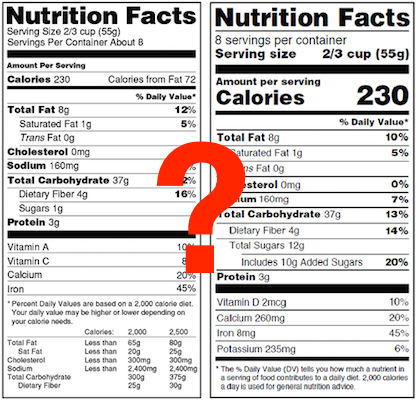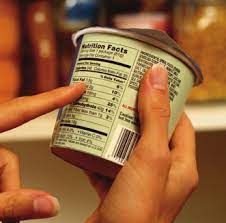Servings Per Container: When to Use Dual Column Nutrition Labels
We posted about the new dual-column requirements for showing nutrition information per serving and per container. But you don't always have to show the information for the whole container when there are between 2 and 3 servings in it.
Sometimes there's more useful information to put on the package. Sometimes the requirement just doesn't make sense. And sometimes it's a good idea to keep the number of columns on a label to two. So...
There Are Exemptions!
1. If a serving in your package is made up of more than one discrete unit (3 cookies or 2 mini-muffins, for example), you can provide a column with information for a single unit (1 cookie, 1 muffin) instead of for the entire container. But if you don't want to do that, then you still need to provide the information for the container.
2. If you have a product that needs further preparation and you include a column of information for a serving of the food as prepared, you don't have to give information for the whole container of unprepared product. This exemption applies to mixes, popcorn, etc. Again, if you don't offer the as-prepared information, you have to show the information for the whole unprepared container.
3. If you voluntarily provide a second column of nutrition information for separate groups for which different values are established (for example, both infants and children less than 4 years of age), then you don't need the container information.
4. If your product varies in weight from package to package, like cheese, you don't need dual-column labeling since it's completely impractical and impossible to know the per package values.
5. If your product meets the requirements to use the tabular or linear label formats then you don't need dual-column labeling since you have limited space.
6. And you never need the dual-column label for raw fruits, vegetables, and seafood--even if you provide voluntary nutrition information in labeling or in advertising or make nutrition claims.
Turning Off Dual Column Labels
We will automatically apply the dual column format if there are between 2 and 3 servings in a package. However, if you qualify for one of the exemptions listed above you can turn off this setting:
- Go to the Label Page
- Expand the Label Style drop down
- Select the option "Disable dual column"







